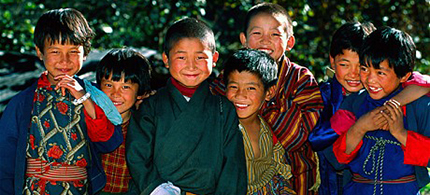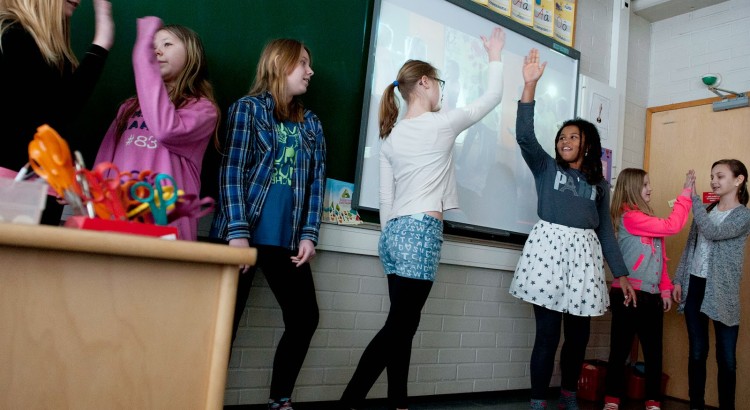India/China/ 12 de julio de 2016/ Fuente: el ciudadano
Buthan es un pequeño reino situado entre el Tibet, India y China. Su población apenas llega al millón de habitantes y en el año 2000, pasaron de ser una monarquía autoritaria a una monarquía constitucional, esto gracias al Rey del país quien decidió no solo conceder más poder al pueblo, sino además crear el Índice de Felicidad Nacional Bruta.

Así es, que el pueblo sea feliz es una de las principales preocupaciones del estado. Pues el Producto Interior Bruto, el medidor de la riqueza de un país, no asegura que el país sea feliz, solo es una cifra del nivel de riqueza: no avala el bienestar de sus ciudadanos. En Bután es más importante la felicidad que la riqueza.
Para incrementar el Índice de Felicidad Nacional Bruta, Bhutan se ha centrado en la educación. La educación enfocada en fortalecer una relación armónica con la naturaleza. Miran por el futuro del país, no por su bienestar económico inmediato.

El cuidado de la ecología y el medio ambiente es muy importante en Bután, ya que es uno de los pilares que sustentan la idea de la Felicidad Nacional Bruta. De hecho, existe una Comisión Nacional para tales fines, cuyo objetivo es proteger los espacios naturales, fortalecer el consumo consciente de recursos y fomentar la responsabilidad social con la naturaleza. El 60 % del país se encuentra protegido mediante una red de diez parques naturales.

Existe una política para el cuidado del agua y pese a que el cambio climático afecta también a Bután, sobre todo a los glaciares, han decidido dar otro paso hacia una vida saludable y sostenible, fomentando una agricultura 100% orgánica.
La felicidad nacional bruta (FNB) o felicidad interna bruta (FIB) es un indicador que mide la calidad de vida en términos más holísticos y psicológicos que el producto interno bruto (PIB).

Los cuatro pilares de la Felicidad Interna Bruta son: la promoción del desarrollo socioeconómico sostenible e igualitario, la preservación y promoción de valores culturales, la conservación del medio ambiente y el establecimiento de un buen gobierno.

Pero tanto bienestar, consciencia y sostenibilidad debe tener un lado oscuro. Para descubrir este oscuro secreto, un periodista de la BBC llamado Eric Weiner, viajó al idílico país y esto fue lo que descubrió…

Mientras Eric visitaba Tjimphu, la capital de Bután y estaba sentado con el director del Centro de Estudios de Karma Ura sufrió un ataque de pánico. Después de esta crisis, Weiner quiso entender qué le había sucedido:
– “¿Por qué ahora? – mi vida va inusualmente bien – ¿Qué puedo hacer al respecto?”
– “Hay que pensar en la muerte cinco minutos todos los días. Se te va a curar”, contestó Ura.
– “¿Cómo?”
“Es esta cosa, este miedo a la muerte, el miedo a morir antes de que hayamos logrado lo que queremos o hayamos visto crecer a nuestros hijos. Esto es lo que te está generando problemas”.
– “Pero, por qué iba a querer pensar en algo tan deprimente?”
– “Hay gente rica en Occidente que no ha tocado cadáveres, heridas frescas, ni cosas podridas. Y esto es un problema. Es la condición humana, y tenemos que estar preparados para el momento en el que dejemos de existir”.

Así fue como Eric observó cuál era el verdadero secreto oscuro de los butaneses: pensar en la muerte constantemente. Caminar junto a ella, ser conscientes y vivir sabiendo que cada día puede ser el último.

La muerte en occidente tiene una connotación negativa, y evoca miedos y negaciones, lo que la transforma en un tema tabú, del que generalmente no se habla a no ser que sea estrictamente necesario

En tanto, en Bután, la visión de este concepto es muy distinta. Se trata de uno de lo países más felices del mundo y su clave para serlo es tener una relación con la muerte radicalmente opuesta a la que tenemos la mayoría. Los habitantes de este feliz país piensan en la muerte cinco veces al día.
En Bután existen imágenes de la muerte en todas partes y también hay danzas rituales que la ensalzan. Forma parte de la vida y no sienten miedo de mirarla.

El efecto beneficioso de esta práctica también se ha confirmado lejos del país. Los psicólogos Nathan DeWall y Roy Baumesiter, hicieron un estudio en la Universidad de Kentucky, EE. UU., que demuestra que los butaneses tienen razón, ya que tras un estudio descubrieron que “la muerte es un hecho psicológicamente amenazante, pero cuando la gente la contempla, al parecer, el sistema empieza a buscar pensamientos felices de forma automática”.

Fuente: http://www.elciudadano.cl/2016/07/07/304162/1el-oscuro-secreto-de-butan-para-ser-uno-de-los-paises-mas-felices-del-mundo/








 Users Today : 304
Users Today : 304 Total Users : 35459899
Total Users : 35459899 Views Today : 484
Views Today : 484 Total views : 3418456
Total views : 3418456